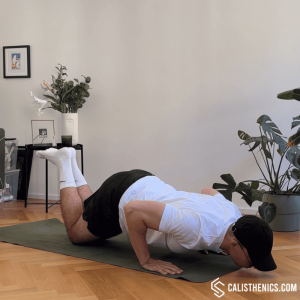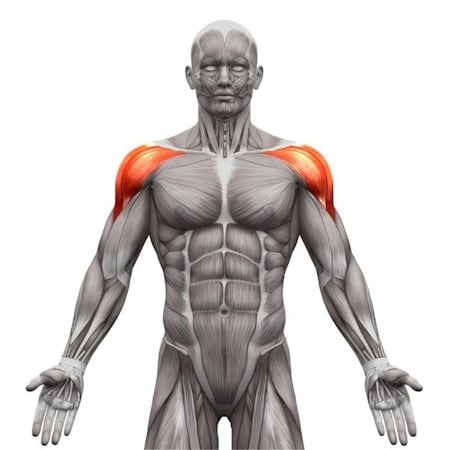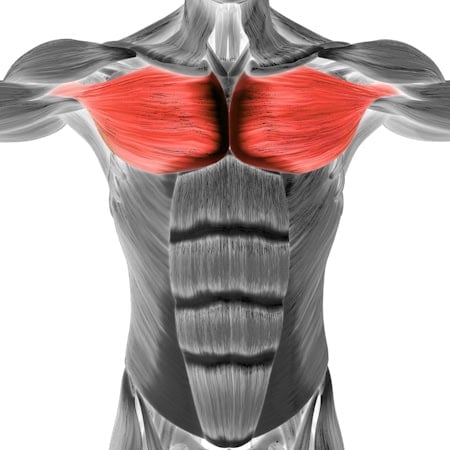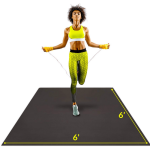Knee Push-ups
How to do Knee Push-ups?
Knee push-ups are a beginner-friendly variation of traditional push-ups that involve using your knees as the pivot point rather than your toes. This reduces the overall body weight you’re pushing, making it easier to perform while still engaging key muscles.
Steps to perform the exercise:
1. Starting Position:
• Begin on all fours (hands and knees) on the ground.
• Keep your knees bent, and place them comfortably on the floor. Position your hands slightly wider than shoulder-width apart.
2. Align Your Body:
• Your body should form a straight line from your head to your knees.
• Engage your core by pulling your belly button toward your spine to maintain this alignment throughout the movement.
3. Lower Your Body:
• Inhale as you bend your elbows, lowering your chest toward the ground. Keep your elbows at about a 45-degree angle from your body.
• Lower yourself until your chest is just above the ground, or as low as you can comfortably go.
4. Push Back Up:
• Exhale and press through your palms to straighten your arms, lifting your chest back up to the starting position.
• Keep your core tight and avoid letting your hips sag or lift too high.
Benefits of Knee Push-ups
Knee push-ups are versatile and can be adjusted to suit different fitness levels, providing both a solid foundation and a challenging progression path for building upper body strength. In particular it has the following benefits:
• Builds Upper Body Strength: Targets chest, shoulders, and triceps without the full body weight required in traditional push-ups.
• Improves Core Stability: Helps engage the core muscles, improving overall stability and posture.
• Beginner-Friendly: A great option for those new to strength training or those who struggle with traditional push-ups.
• Progression to Full Push-ups: A stepping stone exercise to develop strength and confidence before advancing to regular push-ups.
• Joint-Friendly: Puts less pressure on the shoulders and wrists than full push-ups, making it a good alternative for people with joint concerns.
Tips for the proper execution of Knee Push-ups
Core Engagement: Keep your core tight and maintain a straight line from your head to your knees. Avoid sagging or arching your lower back.
Hand Placement: Your hands should be placed directly under your shoulders or slightly wider for a balanced position.
Controlled Movement: Lower yourself in a controlled manner, avoiding jerky or fast motions. Control helps build strength and reduces the risk of injury.
Breathing: Inhale as you lower your body, exhale as you push up. Controlled breathing supports overall stability.
Muscles worked when doing Knee Push-ups
Knee push-ups primarily target:
•Chest: Pectoralis major and minor
•Shoulders: Deltoids
•Triceps: Located on the back of your arms
•Core: Abdominals and obliques (for stability)
•Back: Muscles like the serratus anterior, which helps with shoulder stability
Primary Muscle(s):
Secondary Muscle(s):
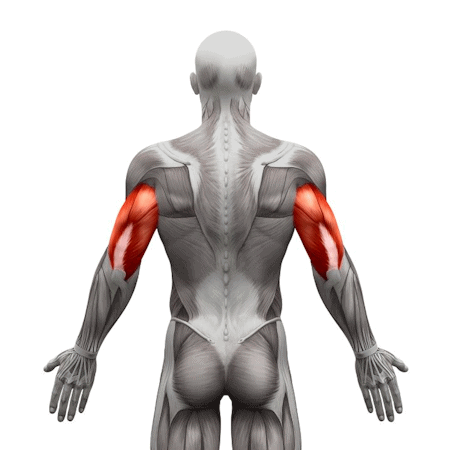
Triceps
Adjust the difficulty of Knee Push-ups
How to make Knee Push-ups harder?
How to make Knee Push-ups easier?
How to make Knee Push-ups harder?
To make Knee Push-ups harder:
-
Increase the Range of Motion: Lower yourself until your chest almost touches the floor for a deeper push-up.
-
Add a Pause: Pause at the bottom of the movement for 2-3 seconds before pushing back up to increase muscle time under tension.
-
Elevate Your Feet: Progress towards full push-ups by elevating your feet on a low platform while keeping your knees down.
-
Slow Down the Tempo: Perform each rep slowly to increase the challenge and improve muscle control.
How to make Knee Push-ups easier?
To make Knee Push-ups easier:
-
Use a Raised Surface: Perform knee push-ups against a bench or table instead of the floor, which reduces the resistance further.
-
Shorten the Range of Motion: Only lower yourself halfway, rather than going all the way down.
-
Use a Soft Mat or Pad: Placing a cushion or mat under your knees can increase comfort and reduce strain, making the movement feel easier.

